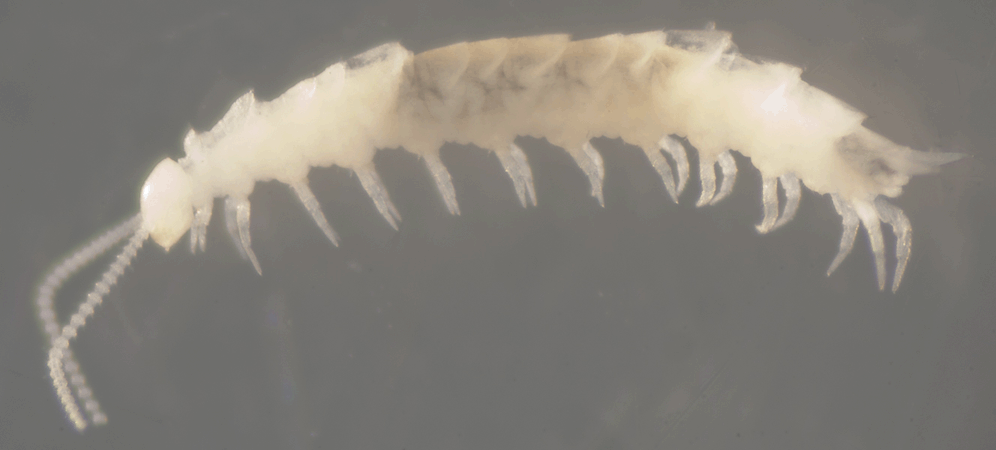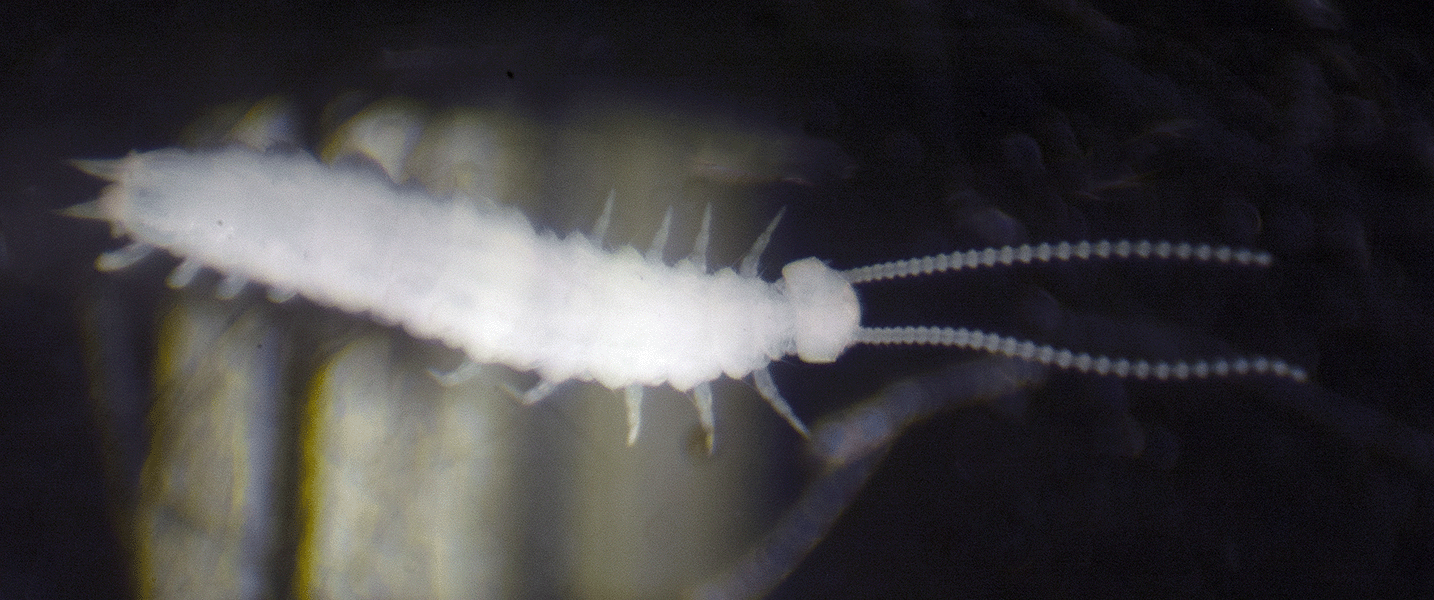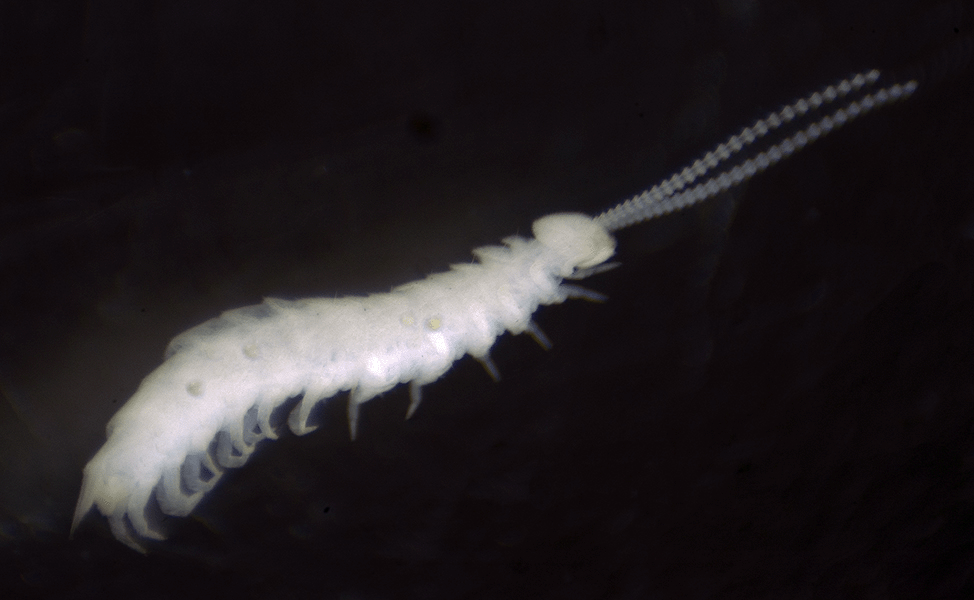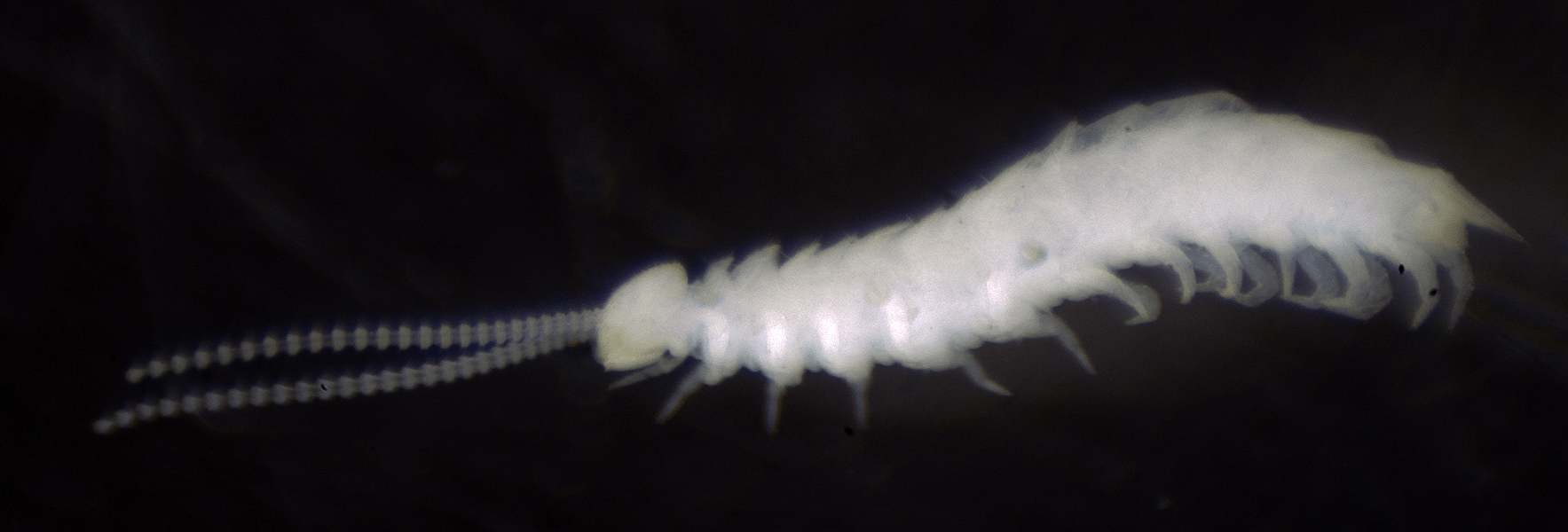Class Symphyla (Dwarf Millipedes, Garden Centipedes) in the Christopher B. Smith Preserve
Symphylan Characteristics: There are about 200 species known worldwide. Most species in this class of arthropods range in length from 1 to 8 mm. They are soft-bodied, slender, lack pigmentation, and have two body regions: head and trunk. The head is well-developed with three pairs of mouthparts. There are no eyes, but antennae have many bead-like segments. At the base of the antennae are organs which probably sense vibrations. The trunk is made of 15 to 24 overlapping dorsal plates. The last trunk segment has a pair of cerci. Newly-hatched nymphs have only 6 pairs of legs, but the total number of legs increase with each molt until an individual reaches adulthood. Adults have 12 pairs of legs. Each pair has an eversible structure that helps it absorb moisture, and a small stylus that may function as another sense organ. Symphylans breath through a pair of spiracles on the sides of the head.
Dwarf millipedes live in soil, especially in the upper 12 to 15 cm, and are found on all continents except Antarctica. They move rapidly through pores in soil particles and feed on germinating seeds, fine root hairs, decaying vegetation, and fungi; they are probably omnivores. In greenhouses, they have been known to cause damage to plants.
Reproduction is external. The male deposits packages of sperm on small stalks. The female picks up the packets in her mouth, lays her eggs, and smears the sperm over her eggs. Eggs are laid in soil in clusters of 8 to 12. There are one or two generations each year. An individual can live up to four years and molts throughout its life.
Interactions in the Smith Preserve: Since they live in soil and move rapidly through pores in the soil, they mix soil nutrients. They are part of the food web, providing food for some types of mite predators. They eat plant roots, causing stress to some plants.
Order |
Family |
Species Name |
Common Name |
Unknown |
Unknown |
Unknown |
Order Unknown Family Unknown Unknown Species ... Dwarf Millipede
|
© Photographs and text by Susan Leach Snyder (Conservancy of Southwest Florida Volunteer), unless otherwise credited above.




